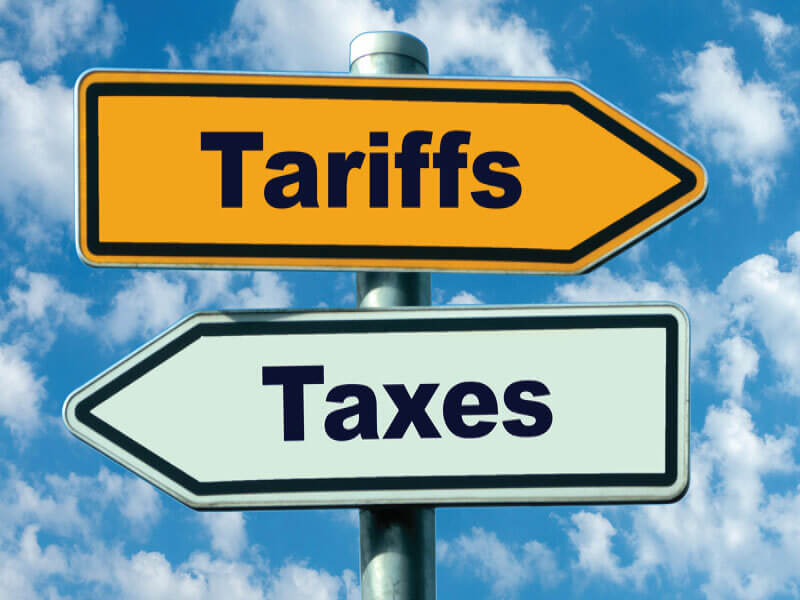Best of Johannesburg
Future Proof Your Budget: How Tariffs and Taxes Are Shaping Daily Costs in South Africa, 2025

Lead: A Conversation at the Spur
Picture this: you’re chatting over a tea with a friend in Maboneng, both of you noting how coffee and clothes seem to be creeping up in price. What’s behind the pinch at the till? Welcome to the story of 2025, the year when global politics, trade shifts, and policy moves started to shape your grocery bill, your favourite gadgets, and even the car parts that keep your wheels turning.
Why Your Wallet’s Feeling the Heat
Own‑Goal: The VAT That Almost Was
Back in March, Treasury announced a VAT hike, from 15 to 15.5 percent, rolling into 16 percent the following year. The idea: bolster tax revenues. Small businesses, already battling loadshedding and simmering inflation, braced for a squeeze. But in April, after a political stir from parties like the DA, the government backtracked. The VAT remains at 15 percent, for now. It’s a dramatic U‑turn that gave breathing space to both buyers and sellers.
The Tariffs Turn: From 10 to 30 Percent Overnight
While VAT stayed put, tariffs did not. In August, the U.S. slapped a unilateral 30 percent tariff on South African exports, up from a previous 10 percent baseline. This isn’t academic. It hits our winemakers, our automakers, and our farmers; some 13 000 jobs hang in the balance. Deciding between job security and economic survival is no choice at all for many families.
When Policy Meets the Sidewalk
Wineries on the Brink
Local vineyards, many of them family‑run estates, now watch as U.S. orders evaporate. Prices may stay the same, but that doesn’t mean business continues as usual. One winemaker remarked that importers have collectively pressed pause. Pivoting to new markets is already underway, but it’s a slow, delicate dance; broken relationships don’t mend overnight.
Everyday Impact: Not Just For Exporters
Even if you’re not farming or exporting, your budget is still in the line of fire. Tariffs disrupt supply chains, meaning imported gadgets, clothing from overseas, and even vehicle parts climb in price. That ripple through inflation hits your rand harder.
Jobs in Jeopardy
Beyond output prices, some sectors may start trimming staff or delaying hiring altogether. That’s income lost, and demand weakened. Suddenly, discretionary spending shrinks… and the local coffee you love gets downgraded to a more modest treat.
What You Can Do: Smart Moves for Stressed Wallets
Stay Alert to Policy Twists
Following Treasury updates or tracking trade talks helps you anticipate price shifts before they hit. If VAT were to increase, or tariffs fluctuate again, you’d be among the first to notice.
Lean Local and Buy SA
Home‑grown goods aren’t just patriotic; they’re often wallet‑friendly. Your decisions matter. Every local purchase supports jobs and offsets the cost‑push from imports.
Build a Financial Cushion
An emergency fund isn’t an option; it’s a lifeline when budgets suddenly tighten. Start small if you must, but be consistent.
Share, Support, Strengthen
Community matters now more than ever. Support a friend’s local craft, share tips on price-wise swaps, or find a barter circle. Social media groups are buzzing with ideas for surviving the squeeze, and that collective creativity makes a difference.
A New Takeaway, Cape‑Style
This isn’t just a story about numbers. It’s the story of how geopolitics meets your monthly groceries and how foreign policy inches into your fuel tank and morning brew. But here’s the good news: savvy South Africans respond not with despair but with resilience, pivoting, shopping smarter, and choosing local first.
Whether you’re in Maboneng, Soweto, or Sandton, this is your money. And the more you understand the forces shaping it, the stronger you’ll be at the checkout.
Also read: Driving Without a Licence Disc in South Africa? Here’s What You’ll Really Pay in 2025
Follow Joburg ETC on Facebook, Twitter, TikT
For more News in Johannesburg, visit joburgetc.com
Featured Image: USA Customs Clearance























